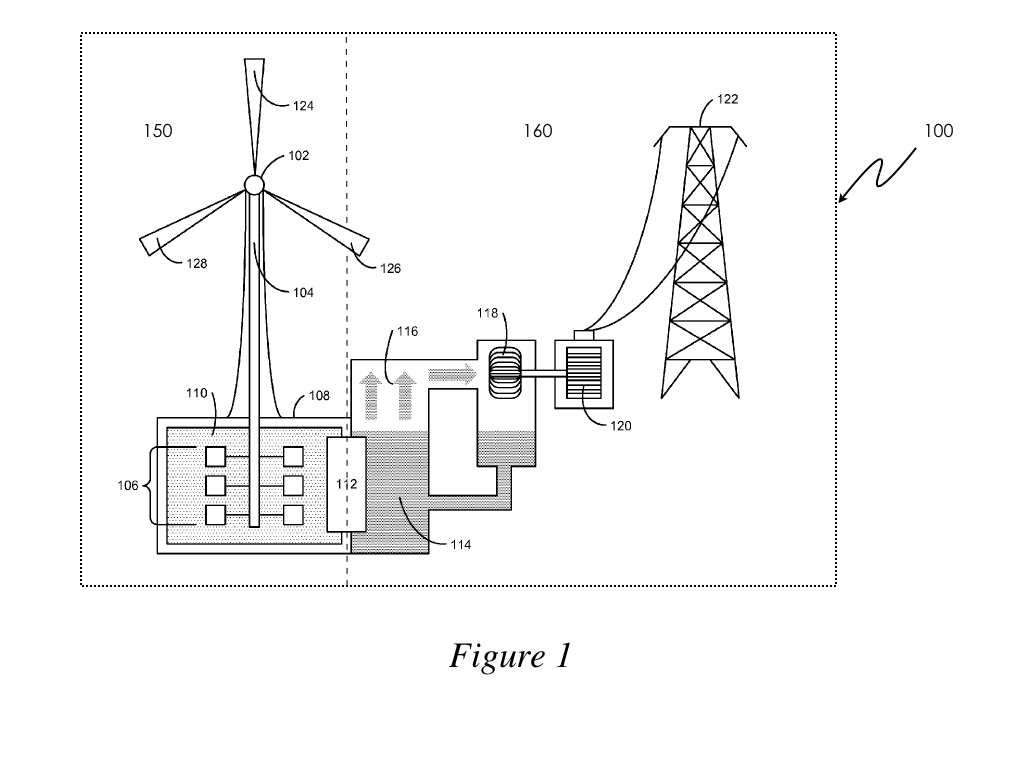an apple wind turbine?
Apple’s “On-Demand Generation of Electricity From Stored Wind Energy" (US 2012/0326445) patent application made a few headlines after it was published on December 27th. Right from the get-go is the intrigue of Apple thinking about energy generation.
As a brief comment, I think this is not too far out there for Apple to be thinking about energy or other topics that might be only tangentially related to its core products, particularly now that it has considerable financial muscle.
AppleInsider appears to be early in the initial wave of coverage, with a few environmental blogs, treehugger and inhabit for example, posting articles similar to the original AppleInsider coverage. After reading through the published application the ending of the AppleInsider article struck me as a bit premature. Namely, some of the technical details disclosed in this application leave plenty of room for optimization, before any “possible” implementation. That said let’s dig into the technology a bit.
I have reproduced Figure 1 of the patent application, with some added annotation, below. One might divide the whole system 100 into a “wind-to-heat” section 150 and a electricity generation section 160, with this latter section using a working fluid. I think it is safe to say the generation system 160 is known. One can think of nuclear energy where the working fluid 114 is water and the turbine 118 is a steam turbine. In one sentence the wind-to-heat section 150 discloses capturing wind energy with blades 124-128, transmitting this energy with rotational transmission mechanism 104 to blades 106, which, rotate within low-heat-capacity fluid 110, generating heat from friction between the blades 106 and the fluid 110.
It is this interaction between the blades 106 and the fluid 110 that is at the crux of my earlier optimization comment. In the absence of specific data it is not clear that the co-efficient of friction between the blades 106 and the fluid 110 would be high enough in the disclosed examples. Going further, one might speculate on the ultimate efficiency of converting the wind energy to electricity in the disclosed system. At first blush it is also unclear if a low-heat capacity fluid is an optimal choice for the fluid 110. By definition a low-heat capacity substance does not have a high capacity to store heat, which is one of the main functions of fluid 110. Even further, one could hypothesize a system implementing a very high co-efficient of friction such as aluminum – aluminum and a high heat capacity fluid that can extract and store the heat from the above aluminum plates.
In terms of patentability it will be interesting to see what claims are finally granted. If claims to the overall system 100 issue that would certainly be sweet. While not doing any searching my guess is that the broadest idea is known. Whether the applied for claims and their current limitations meet the requirements of the USPTO is a question for the Examiner to determine.



